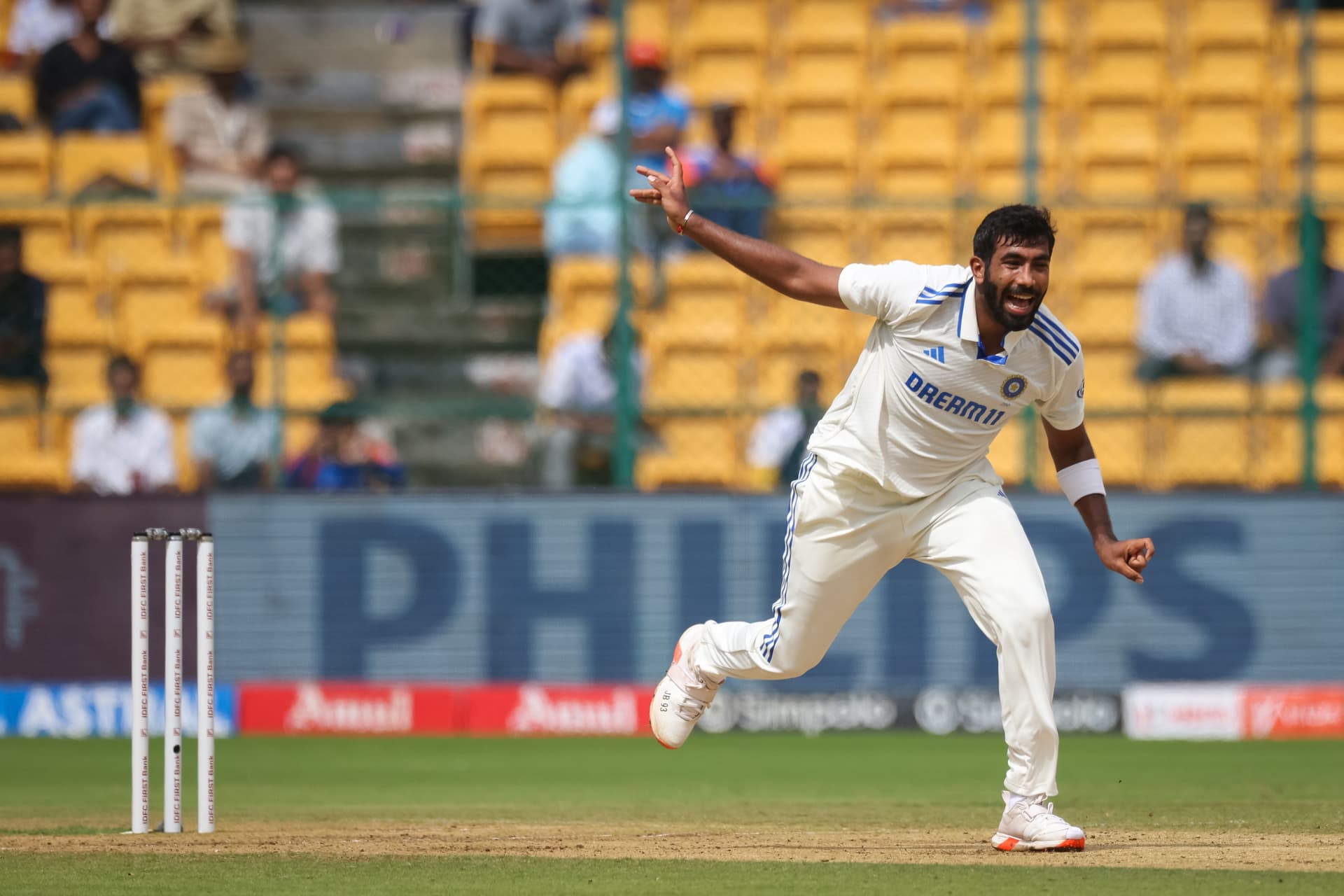Cricket
Reverse Swing in Cricket: The Game-Changing Bowling Technique Explained
Modern Cricket has gone towards suiting players with bat in hand. The rise of T20 Cricket, new rules and laws have seen batters dominate the sport over the last 10-15 years. With that, bowlers have had to adapt and come up with ways to get batters out. One of the key ways to do that is reverse swing. But, how does reverse swing work? Let's take a look down below.

Jasprit Bumrah//Getty Images
Generally speaking, the ball has a shiny side and a rough side to it. The ball will swing the opposite side of the shiny side of the ball. For example, with a right-handed batter, if the shiny side is facing the batter, the ball will swing away. But, if the rough side of the ball is facing the batter, the ball will swing inwards to the batter.
Swing bowling can occur normally with a new ball, depending on the seam position, but that is not the case with reverse swing.
Reverse swing is best seen when the ball is old and worn out. When the ball is reverse swinging, the delivery comes into the right-hander if the smooth side of the ball is facing towards them. The ball swings away from them if the shining side of the ball is not towards them. So if the bowler is bowling an outswinger with the usual seam straight position, the reverse swing makes it an inswinger and vice versa.
How To Bowl Reverse Swing
During a Cricket match, players will do everything possible to make sure a shiny side is evident. That can involve rubbing the ball against their pants, spitting on the ball and so on. With that, the other side of the ball becomes quite worn out. After a while, the bowler will feel the difference in terms of ball pressure and swing on the cards.
In terms of how does Reverse Swing actually work, it is actually quite scientific. A thin layer of air is around the ball when it is bowled on the rough side, also known as the boundary layer. It will separate from the ball at a certain point. With that, the ball will move. Depending on how early that layer separates, that will be how much the ball swings.
Because of the continual polishing and shining of the ball, the air coverage on the shiny side becomes far greater. That ensures the airflow will be quicker and thus, the ball swings from the normal direction. A conventional inswinger would swing away from the batter and this is what is known as Reverse Swing.
Traditionally, Reverse Swing can come into effect with the ball at around the 35-40 over mark in a Cricket match. But, it could occur earlier. That is because of the conditions, both with the pitch and weather.
Best Reverse Swing Bowlers
In terms of all-time great Reverse Swing bowlers, it's hard to argue with Wasim Akram as the best ever. The Pakistani legend was known as the 'Sultan Of Swing'. That name was afforded to him due to his incredible ability to get the ball to move in the air, especially in big moments and matches. The best case of this was the 1992 World Cup Final against England. He took 3/49 in the match, was named player of the match and took the most wickets for the tournament with 18.
Over the last 5-10 years, there have been three bowlers that have stood out in terms of Reverse Swing. The first one is Mitchell Starc from Australia. The left-hand quick has terrorised batters for a number of years with his swing, especially inwards towards right-handed batters. He has had a host of famous wickets but it is hard to go past the 2015 World Cup Final against New Zealand. He made an immediate statement in the first over, getting out Brendon McCullum. In front of 100,000 at the MCG, it was one of the great moments in Australian Cricket history. He has been the best Reverse Swing bowler this century and continues to dominate across all formats.
James Anderson will go down as one of the all-time great fast bowlers. Retired in 2024, the Englishman was a mainstay of the English Test Team for over 15 years and his way to swing the ball was the reason why he was so good. He was a nightmare for Aussie batters in a host of Ashes Series, especially in England, along with his pace partner Stuart Broad. His longevity and ability to swing the ball in all conditions, all pitches, he was an absolute gun.
Jasprit Bumrah is challenging Starc as the best swing bowler in the world currently. He has a very weird bowling action, but it's very effective. More so when it comes to Reverse Swing. He is lethal, especially at home in India, where the pitches are quite doctored and traditionally suit the home team. That said, he has been a wonderful bowler for a number of years and has been very good away from home, especially in Australia and India.
FAQs
The fielding team will create a shiny and rough side of the ball. The shiny side of the ball is created via polishing and spitting on the ball throughout the innings to the best of their ability.
As stated earlier, the game of cricket over the years has been leaning towards suiting those with bat in hand. Bowling a team out has proven to be quite difficult on occasion. With that, the fielding team uses reverse swing as a way to deceive batters. It is also more effective as the match progresses and the pitch decreases in terms of the quality of it.

Adam Page is a sports nerd. He has been a lover of sport for as long as he can remember, dating back to when his father would cheer on the Brisbane Broncos to NRL titles in 1998 and 2000. He has been predominantly a horseracing journalist since 2009, working for JustHorseRacing as well as a short stint with Punters.com.au. He has also done articles for other websites such as Before You Bet, writing up previews for racing as well as other sports such as NRL, AFL and Darts.